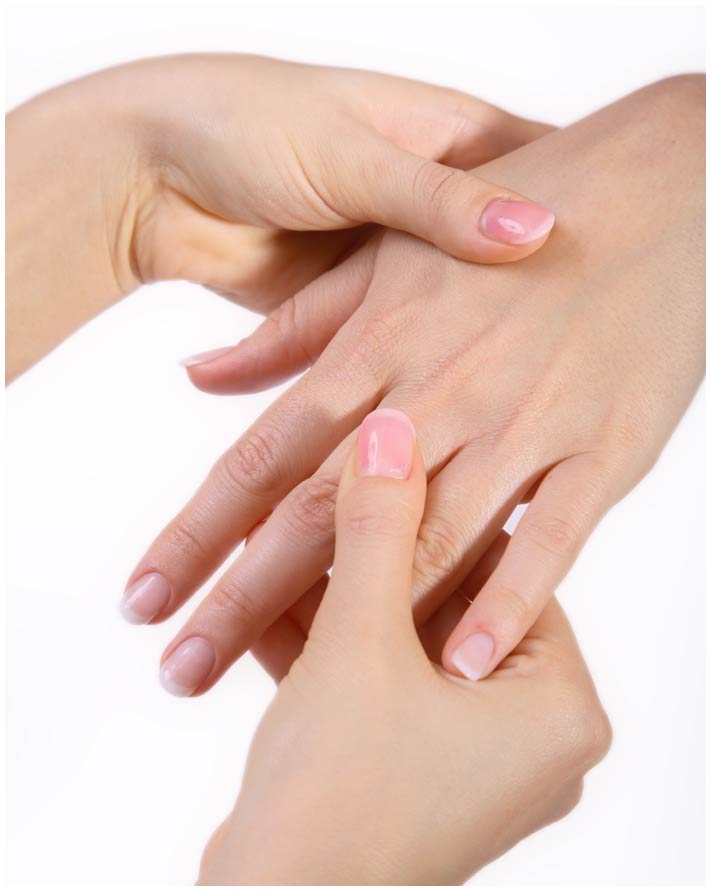We Treat Osteoarthritis
Arthritis is an umbrella term that refers to any joint pain or disease. Under this umbrella are multiple underlying causes of arthritis, one of which is osteoarthritis. The primary features of arthritis are inflammation and pain. These symptoms can be felt in any joint in the body.
The hands are at high risk of developing arthritis due to the 27 bones that make up the fingers, hands, and wrists. When these joints are affected by inflammation, they can become painful, making it difficult—or even impossible—to complete daily tasks. This pain and inflammation can have several root causes, e.g., rheumatoid arthritis being caused by an autoimmune disorder. Osteoarthritis, on the other hand, is a degenerative disease that occurs over time from mechanical wear and tear or, in some cases, from a specific injury.
Causes
Joints are present wherever two bones meet. Both ends of the bones in a healthy joint are covered in smooth cartilage that allows the bones to glide past each other. Arthritis occurs when an underlying condition causes this cartilage to wear down. When this happens, the bones are unable to glide smoothly, causing pain and inflammation. The hands, being in near constant motion in daily life, are particularly susceptible to losing this cartilage over time.
Signs and Symptoms
The initial symptoms of osteoarthritis of the hands tend to begin in three particular regions:
- The base of the thumb where it joins the wrist—a side effect of our opposable thumbs which allow us to grasp objects;
- The first joints—those closest to the fingertips;
- The middle joints—those below the first joint.
Overtime, arthritis can begin to affect the rest of the joints in the hand and wrist, causing pain, inflammation, swelling, stiffness, and difficult bending the fingers. In late stages, visible deformity can develop.
A classic symptom of osteoarthritis in particular is the formation of nodules at the middle joints or tips of the fingers. These nodules are made of bony growths or cysts caused by calcification of the cartilage between the bones.
Osteoarthritis usually develops over time. People with the condition may eventually have a difficult time performing daily tasks like opening jars, turning handles, and grasping objects.
Diagnosis
Most people with osteoarthritis are diagnosed when their symptoms become bothersome enough to seek treatment. The diagnosis itself is fairly simple. Doctors will usually collect a history of the symptoms and how they affect daily function. X-rays may be ordered to determine how severe the condition is.
Treatment
The goal of any osteoarthritis treatment is to reduce pain and allow the patient to return to a normal, productive lifestyle. Patients will commonly begin treatment by working with a hand therapist who can customize at-home treatments and lifestyle changes that can greatly improve their condition.
Immobilization with splints, sleeves, or periods of rest can be helpful for first-line treatment. Heat can also help reduce inflammation and keep the joints supple. However, it is vital that the joints are gently exercised to maintain mobility. Hand therapists teach special exercises that maintain range of motion while protecting the joints.
The next line of treatment involves anti-inflammatory medications, including both over-the-counter and prescription drugs. Steroid injections may also be used.
When the above options have not improved the patient's condition enough, surgery may be considered. Surgery is usually a last resort for patients with unbearable pain. There are two surgical treatments for osteoarthritis: joint fusion and joint reconstruction. An experienced hand surgeon can help patients decide which surgery to choose based on medical history and lifestyle.
Joint fusion permanently removes the function of the joint by removing the damaged cartilage and fusing the two bones together. This technique eliminates the pain but makes the joint unusable. The second surgery, joint reconstruction, attempts to recreate the cartilage, but the success rate of reducing pain is lower than joint fusion.
Schedule Your Appointment
Call Meridian Hand Therapy Today At (805) 497-1700
Hand Therapy Thousand Oaks
Discover the Real Benefits of Occupational Therapy
The goal in any hand therapy program is to help the patient return to a productive lifestyle. Working with a hand therapist allows patients to go beyond mere management of their condition by actively working toward a full and successful recovery. In most cases, this specialized form of occupational therapy allows individuals to resume normal function in their day-to-day activities.
Hand therapy focuses on a combination of patient education and training as well as adaptive recommendations and equipment. Patients benefit from learning about energy conservation and joint-protecting techniques. Using their years of experience, hand therapists can recommend a customized set of tools that may include simple exercises, stretches, and regimented activities to improve strength, flexibility, and overall function. Addressing pain, swelling, and wound care is another crucial component of successful treatment.

